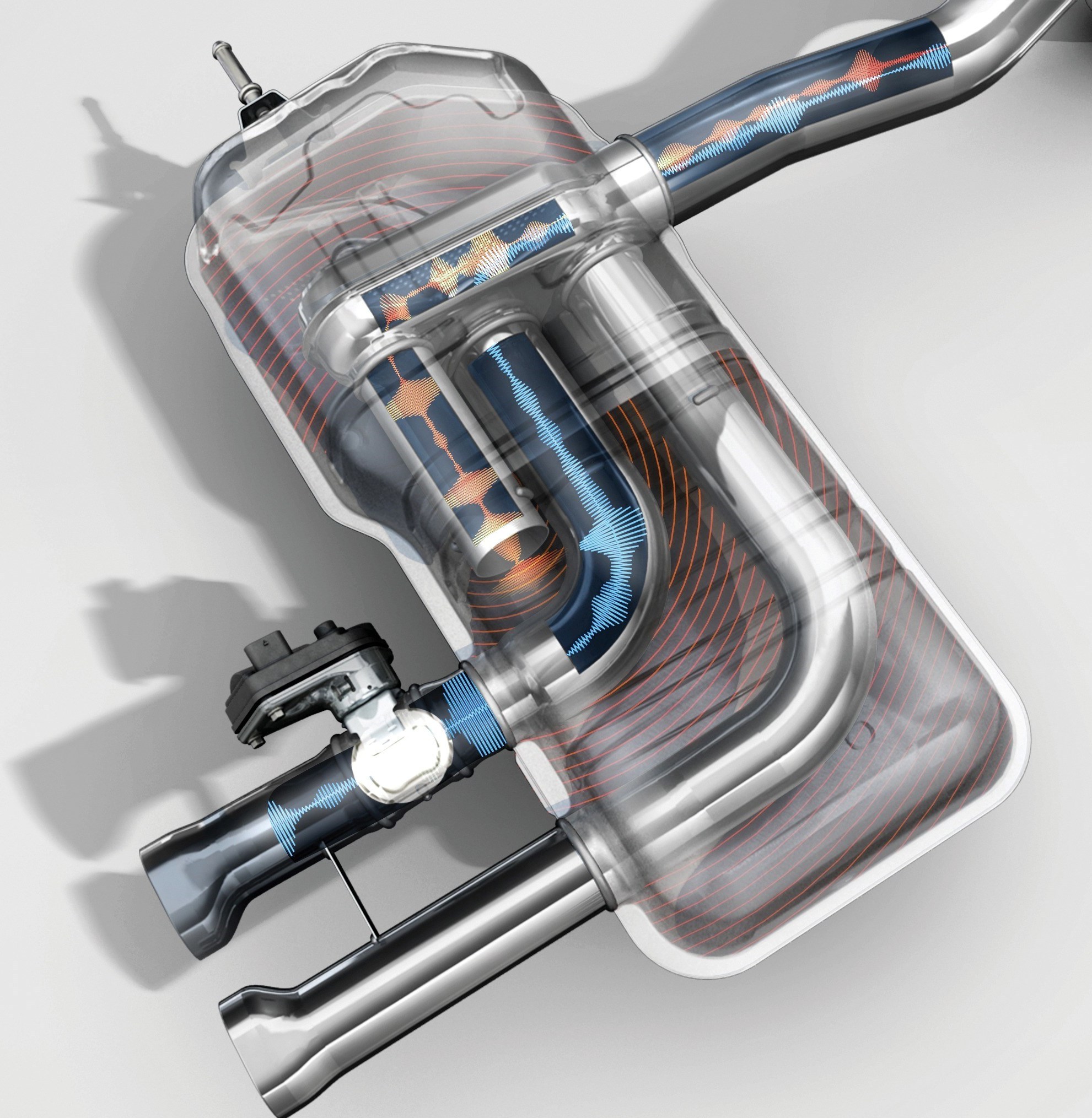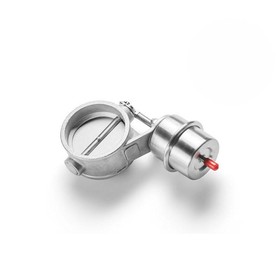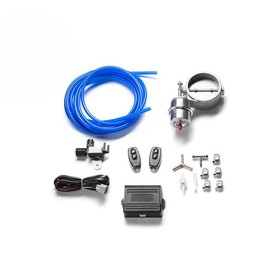Exhaust Valve Markings - Boost Closed, Vacuum Closed, and Vacuum Open

Exhaust Valve Markings - Boost Closed, Vacuum Closed, and Vacuum Open
Boost and vacuum are two concepts related to pressure in the engine's exhaust and intake systems, which have a significant impact on its performance. Boost refers to positive pressure generated by a turbocharger, while vacuum refers to negative pressure created in the intake system.
Boost (positive pressure):Boost is a concept related to engine turbocharging. The turbocharger increases the amount of air delivered to the intake system by compressing it. As a result of this process, positive pressure is created, which increases the amount of fuel burned and generates more engine power. In Boost Closed mode, the flow of exhaust gases through the exhaust valve is restricted or closed, leading to increased pressure in the exhaust manifold. This allows for greater engine power and performance.
Vacuum (negative pressure):Vacuum refers to negative pressure created in the engine's intake system. It is generated by the pressure difference between the intake manifold and the atmosphere. This negative pressure helps improve the engine's torque in low and mid-range RPMs. In Vacuum Closed mode, closing the exhaust valve restricts the flow of exhaust gases from the cylinders, increasing the engine's load and contributing to increased torque in these ranges.
It is important to understand that boost and vacuum are two distinct concepts related to different aspects of engine performance. Boost is about increasing power through positive pressure generated by a turbocharger, while vacuum focuses on improving torque in low and mid-range RPMs through negative pressure in the intake system.
Exhaust valves are crucial components in a car's exhaust system that have a significant impact on engine performance. The valves control the flow of exhaust gases from the cylinders to the exhaust system, and different exhaust valve markings indicate different settings and operating modes. In this comprehensive article, we will examine three popular exhaust valve markings: Boost Closed, Vacuum Closed, and Vacuum Open, and discuss their meanings for engine operation.
Boost Closed Marking
- Definition: The "Boost Closed" marking refers to the position of the exhaust valve where the flow of exhaust gases is closed or restricted when the turbocharging system is active.
- Operation: When the exhaust valve is in the Boost Closed position, it restricts the flow of exhaust gases from the cylinders, leading to increased pressure in the exhaust manifold. In the case of turbocharged engines, closing the exhaust valve in Boost Closed mode helps increase the boost pressure of the turbocharger, which can result in increased engine power.
- Application: The Boost Closed mode is often used in situations where greater engine power is required, such as during races or when accelerating on the road. The switching of the exhaust valve to Boost Closed mode is often controlled by an advanced electronic engine management system or turbocharger control system. This allows for quick response to the need for increased power and optimal utilization of the turbocharging potential.
- Effects: Closing the exhaust valve in Boost Closed mode restricts the flow of exhaust gases, which can affect the exhaust characteristics. The higher pressure in the exhaust manifold can also impact the operating temperature of the turbocharger. Therefore, it is important to ensure that the cooling and lubrication systems of the turbocharger are properly designed and well-maintained.
Vacuum Closed Marking
- Definition: The "Vacuum Closed" marking refers to the position of the exhaust valve where the flow of exhaust gases is closed or restricted depending on the level of vacuum in the engine's intake system.
- Operation: When the exhaust valve is in the Vacuum Closed position, it restricts the flow of exhaust gases from the cylinders, leading to increased engine load. Closing the exhaust valve in Vacuum Closed mode can help increase the engine torque in low and mid-range RPMs.
- Application: The Vacuum Closed mode is often used to improve the responsiveness of the engine in naturally aspirated vehicles. In such cases, closing the exhaust valve in Vacuum Closed mode helps increase the engine load, which can contribute to improved torque in low and mid-range RPMs. This is particularly useful during acceleration from low speeds or when driving off-road, where high low-end torque is important.
- Effects: Closing the exhaust valve in Vacuum Closed mode can affect the flow resistance of exhaust gases and engine load. In some cases, adjustments to the fuel map and ignition timing may be necessary to achieve optimal engine performance in this mode. It is also important to monitor the operating temperature of the engine and exhaust system to prevent component overheating.
Vacuum Open Marking
- Definition: The "Vacuum Open" marking refers to the position of the exhaust valve where the flow of exhaust gases is unrestricted, and the valve is fully open.
- Operation: The exhaust valve in the Vacuum Open position allows unrestricted flow of exhaust gases from the cylinders to the exhaust system without any restrictions. This is the typical setting for the exhaust valve under normal driving conditions when the engine doesn't require special operating parameters. The Vacuum Open mode is used during regular on-road driving when there is no need to manipulate the flow of exhaust gases. In this position, the exhaust valve allows optimal flow of exhaust gases, helping to maintain engine efficiency and minimize flow resistance. It is also the operating mode during relaxed driving, where engine performance is not a priority.
- Application: The Vacuum Open mode can be used to enhance engine efficiency and minimize flow resistance of exhaust gases during regular on-road driving. Opening the exhaust valve in Vacuum Open mode allows free flow of exhaust gases, which promotes optimal exhaust system operation and maintains high engine efficiency. This is especially beneficial during prolonged, steady-state driving, where engine performance is not a priority, and minimizing fuel consumption and emissions is important. The Vacuum Open mode can also be used during relaxed driving, where smooth and even acceleration is desired.
- Effects: Setting the exhaust valve in Vacuum Open mode can be beneficial for engine performance and exhaust system efficiency. It allows for unrestricted flow of exhaust gases, minimizing flow resistance and potential power losses. As a result, the engine can achieve optimal performance, especially in high RPM ranges where a large amount of exhaust gases needs to be efficiently expelled.
It is important to note, however, that setting the exhaust valve in Vacuum Open mode may not be optimal in situations where greater power or torque is required. In such cases, switching to other settings, such as Bthoost Closed or Vacuum Closed, which allow manipulation of the flow of exhaust gases to increase engine performance, may be necessary. To summarize: The markings on the exhaust valves, such as Boost Closed, Vacuum Closed, and Vacuum Open, are significant for the performance and operating parameters of the engine. By controlling the flow of exhaust gases, it is possible to manipulate the power, torque, and responsiveness of the engine in different RPM ranges. Proper adjustment of the exhaust valve can ensure optimal engine performance based on driving conditions and driver preferences. However, it is important to conduct any modifications to the exhaust system in compliance with regulations and considering the vehicle's technical specifications to ensure safe and legal operation. If there are any doubts or a need for professional advice, it is recommended to consult with an experienced mechanic or an exhaust system specialist.
Recommended
 Special offer
Special offer
Pneumatic exhaust valve 2.5" (63 mm) Boost Closed
 Special offer
Special offer